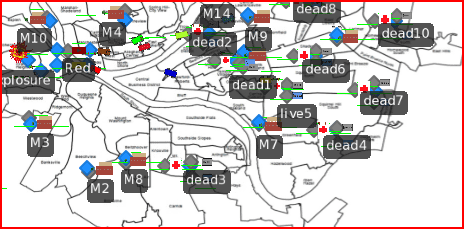
The City of Pittsburgh has an Emergency Medical Service (EMS) system that services 88 neighborhoods. Students at the University of Pittsburgh investigated if the current EMS system is equipped to handle mass casualties.

INDUSTRY
Healthcare
ORGANIZATION
University of Pittsburgh

The City of Pittsburgh has an Emergency Medical Service (EMS) system that services 88 neighborhoods. Students at the University of Pittsburgh investigated if the current EMS system is equipped to handle mass casualties.
Students at the University of Pittsburgh used Simio to assess the existing EMS process and simulate the effect that mass casualties would have on the EMS system. The mass casualty scenario was based on the Three Rivers Regatta accident in 1988, where a boat lost its course and collided with the shore, injuring 24 spectators. The students considered a location of an event, the locations of dispatch centers and hospitals and distances between each, as well as ample medical equipment, wait times and criteria for the most severe injuries and injuries not as severe.
With the input and scenario the students showed that the current system is sufficient. In the event of an emergency with less than 100 injuries, the current dispatching plan is best. In emergencies of more than 100 injuries, the dispatch plan shown by the simulation reduces time in transit – which can be the difference between life and death.
More Student Projects
January 18, 2024
January 18, 2024
January 18, 2024